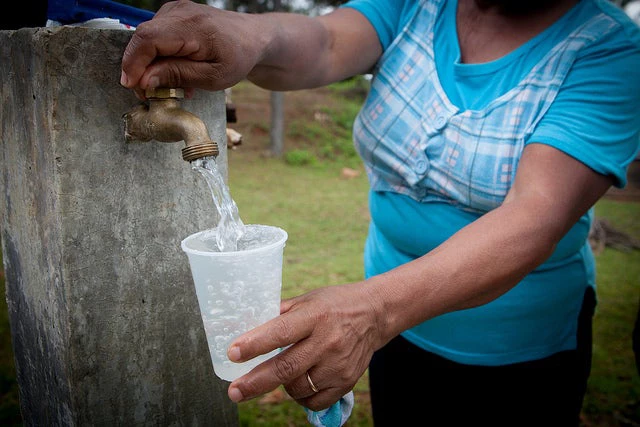
Bella Vista, Las Lomas, province of Cocle, Panama.
Photo credit: Gerardo Pesantez / World Bank
Ask your child: “Where does our water come from?” And many of them might roll their eyes at being asked such a silly question, and tell you: “Water comes from the tap.”
But how? What is the name of the company that provides the service to you? How much does your water service cost? Is it expensive? Where does your wastewater go? Is it treated prior to discharge? How many people get water from the utility in your town?
You can find answers to these and many other questions on our global website www.ib-net.org. Go to its performance database or its separate tariff database and get your answers! You can be one of nearly 8,000 people that visit the site each month to access a set of standard reports for a range of comparisons, benchmarking and assessments for more than 5,000 water utilities from 150 countries.
If you or your colleagues are preparing a project in a specific country or utility, then IBNET will give you information on your utility , allow you to make a standard report, and get rich information on water services in that country or utility, incuding coverage, leakage levels, collection rates and tariffs. All information is standardized; it can be downloaded and can be embedded into your reports.
- If you want an aggregated country level profile then visit: https://database.ib-net.org/country_profile?ctry=68
- If you are just looking for a specific utility profile then visit: https://database.ib-net.org/utility_profile?uid=12
The IBNET team spends a lot of time on data quality. Our tools have more than 70 filters that prevent the input of wrong information and inform us of outliers and duplicates. We also have a data verification protocol that allows more rigorous checks on data quality.
IBNET is the tool of choice for more than 20 on-going projects in the Bank . Every year this number is increasing. IBNET tools are expanding further, and are becoming true international instruments: utilities, international and national water utility associations like www.danubis.org, www.pwwa.ws, etc. are all using IBNET.
Please get answers for your questions on water and your water company!
We would be very happy if you use IBNET!
We would be even happier if we can join forces and add more information to IBNET. Share your project data with us to make it available to the water community to fulfill the noble goal of providing water for all.
Please come get in touch with us,
Alexander and Aroha



Join the Conversation